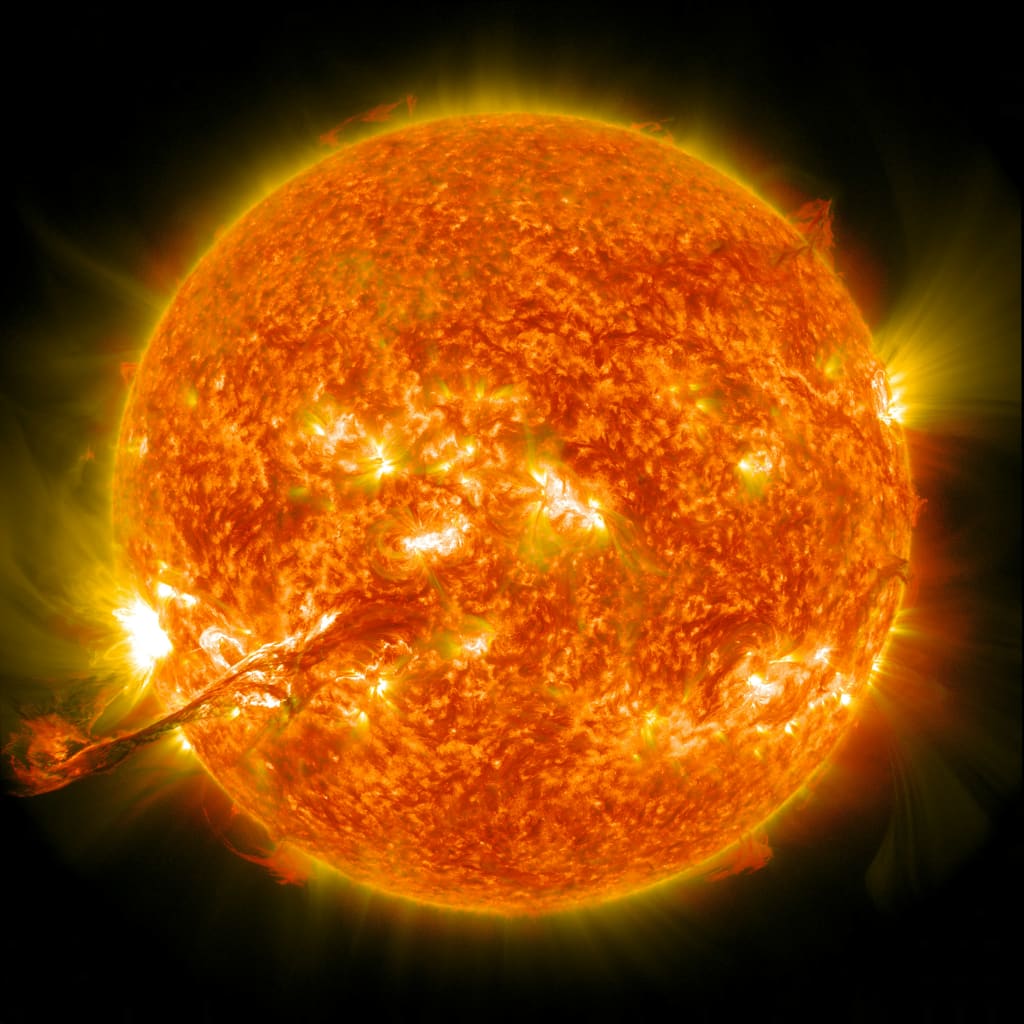"How deep have we been able to observe inside the Sun?"
Exploring the Sun: A Journey Through its Layers

The Sun, our 4-and-a-half billion-year-old parent star, is a fascinating celestial body that has captivated humans for centuries. Thanks to NASA's Solar Dynamics Observatory satellite (SDO) mission, we now have access to an incredible full portrait of the Sun's surface, allowing us to study its behavior and impact on life on Earth and the future of our space technologies.
The iconic image was taken in March 2022, while the SDO was halfway between Earth and the Sun. Scientists had to assemble 25 individual images like a puzzle, resulting in a final image that contains 83 million pixels. The resolution is about 10 times better than your fancy 4K TV screen, allowing us to observe the Sun's surface in great detail.
The Sun's bright surface typically overshadows it when we observe it from Earth. However, NASA explored the light beyond the visible range to discover some invisible details of the Sun's face. These plasma balls are the same photo of the Sun captured at different electromagnetic wavelengths, and the revealed spots and patterns can help us understand events happening inside the Sun's skin.
At the speed of light, photons generated by the Sun's core take between 10,000 to 170,000 years to travel through the Sun's atmosphere and then around 8 minutes more to reach Earth. Let's explore what's taking them so long and take a journey through the Sun's layers.
The Sun's outermost layer is called the Corona, which is the outer layer of its atmosphere. It stretches 5 million miles above the Sun's surface and wears a fancy crown, which you can spot with the naked eye from Earth during total solar eclipses. The Corona is a gas shell enveloping our parent star, and its size and form constantly fluctuate under the influence of the Sun's magnetic field.
The Sun's Corona is hotter than it should be, with a temperature that reaches 2 million degrees Fahrenheit, whereas the surface of the Sun is only about 9,000 degrees Fahrenheit. This mystery still puzzles scientists, but the recent photo shoot allows us to explore what's going on inside this massive hot stuff without risking losing our sight.
Solar flares are powerful explosions that happen when magnetic fields bump into each other. These explosions change shape and quickly reorganize the fields, and they arise from plasma, which is very turbulent. Solar flares happen under the Corona layer and are depicted as beautiful bright spots in the Sun's portrait.
The Sun also has dark spots on its skin, known as coronal holes, which look darker because plasma in these spots is cooler, less dense, and magnetically open. Earthlings can experience their impact when they observe the beautiful Aurora lights in the polar regions. These conditions allow the solar winds to escape outward across the solar system, rather than hang out at the Sun's surface.
Solar prominences are large bright plasma loops that arise from the Sun's surface and stretch for thousands of miles into space. Their lifespan varies from days to several months, and it's one of the most common events in this region. Although the first detailed description of solar prominence dates to the 14th century, modern scientists are still researching how and why they are formed.
The Sun's transition region sits between its outer and inner layers, and it's the thinnest layer with an unthinkable temperature that can rise up to 900,000 degrees Fahrenheit. The Sun's core is the hottest and densest layer, where nuclear fusion takes place, creating the energy that powers the Sun.
Exploring the Sun's layers is an incredible journey that allows us to understand its behavior and impact on our planet. The Sun's portrait captured by NASA's Solar Dynamics Observatory satellite mission is an excellent example of the importance of space technologies in advancing our understanding of the universe.





Comments
There are no comments for this story
Be the first to respond and start the conversation.